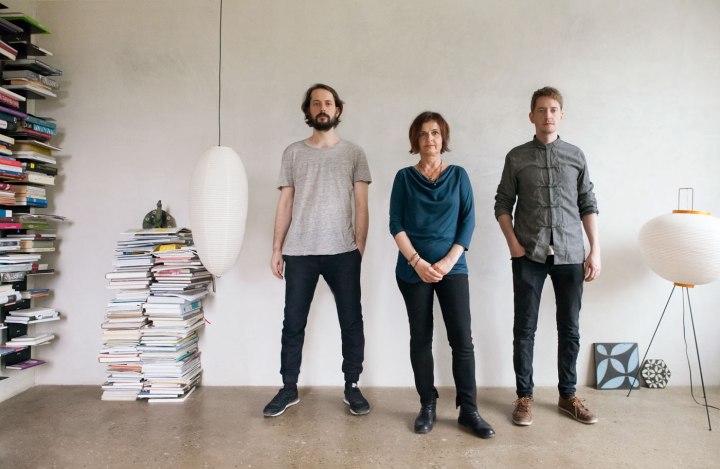
Karak is one of those very rare discoveries: a young, vibrant, creative, energetic company that just happens to have burst onto the tile scene with a product range that is absolutely on trend.



This fledgling manufacturer specialises in hand-crafted clay products that combine the Japanese Raku tradition with innovative digital design.



Rather than Sassuolo, Stoke, Castellon or even Maastricht, Karak hails from the heart of Vorarlberg, in western Austria; and area known locally as a hotbed of quality craftsmanship, artisanal production and high-end design.


“We are a team of designers, architects and artists that share a distinctive notion of beauty,” explains Co-founder, Sebastian Rauch. “We work in the area of conflict that exists between perfection and unpredictability, and believe that objects born out of this tension are able to touch people on a rational and emotional level.”



“We believe in using natural materials and processes for the creation of unique and comfortable surfaces,” amplifies Co-founder, Marta Rauch-Debevec.



Frequently inspired by specific projects or people, Karak designs individual new ranges for clients in a process of customised co-operation. The resulting tile design are, by their very nature, exclusive objects, that can play a key role in creating sublime spaces.


“Our tiles bear witness to the interplay between elements and symbolise how the relationship between East and West can acquire form,” explains Product Designer, Thomas Rösler. “Appealing, geometrical ornaments are the result of repeating digitally developed graphic patterns. They then encounter a centuries-old Japanese firing technique with a fascinating, inimitable character based on chance.”



The body of the tiles is formed from a combination of different clays and loam. Mixed in the workshop with quartz sand and fireclay, this mass is then pressed into the tile form and precisely reshaped by hand. These tiles are then glazed, using a silkscreen process, to impress the rhythmical symbols that are a feature of the tiles.
The tiles are then fired at a temperature of around 1,000°C which causes dramatic changes in the material. This low temperature firing renders the material more porous so that, when touched, it resonates a deep organic sound and has a warm feel.



Once fired, the glowing tiles are taken, one by one, from the kiln using tongs and immediately buried in sawdust. The process of denying the tile oxygen, and the ensuing smoke, have an intensive effect on the surface that differs every time: the colour changes according to the glaze and the fine hairline cracks are blackened.
“Each of our Raku tiles is worked by hand 36 times before it is used and laid in place,” says Rauch. “Unlike with industrial methods, our hand-crafted production allows us to make a genuine response to individual requirements. Often we develop our tiles in close collaboration with clients and architects. The process is individual: from design, format and the colour of the glaze to the application of, for instance, adhesive mortar, which allows tiles to be taken down and used again,” he continues. “It is only the process of Raku firing that cannot be influenced; which is precisely what makes each tile unique.”
“Our products are made with help of the experienced Team at Lehmtonerde Baukunst in Vorarlberg,” explains Rösler. Lehm (loam); Ton (clay); and Erde (earth) effectively encapsulates the whole philosophy underpinning Lehmtonerde Baukunst’s work. Loam stands for handcraft and technology, Clay for artistic design, and Earth for the sustainability of soil-based construction.
In an era of increasingly accurate tiles produced using highly sophisticated atomisers, presses, kilns and digital inkjet decoration stations, Karak stands apart. It glories in what it defines as: “Chance and order encounter each other in living, unique pieces. An act that is essentially complementary provides the inspiration for an archaic handcraft and modern design.”
The result is Raku tiles, a sensually charged product of elementary processes. And the ceramic tile world is all the richer for the beautiful tiles produced by these dedicated Austrian ceramic pioneers.
A new post by Joe Simpson, Diary of a Tile Addict, April 2017. This article first appeared in Tile & Stone Journal, November 2016.

One thought on “Raku Revivalists”